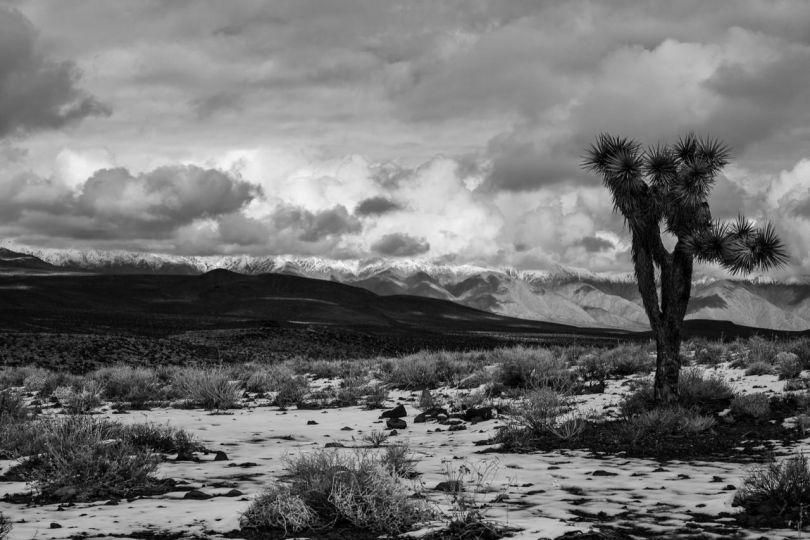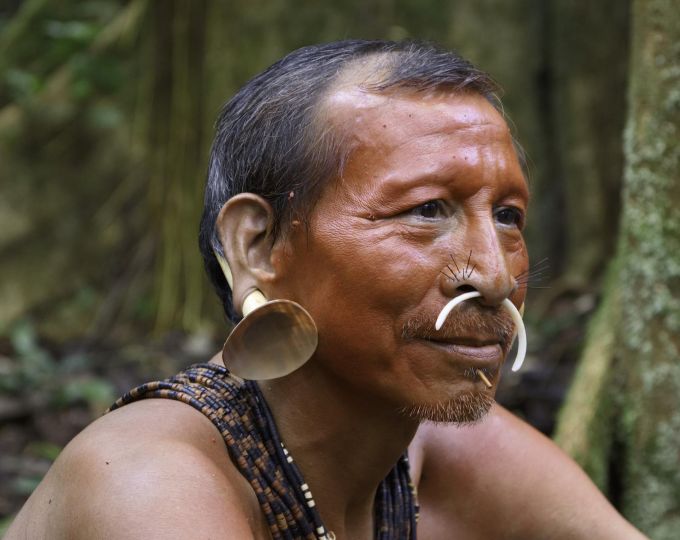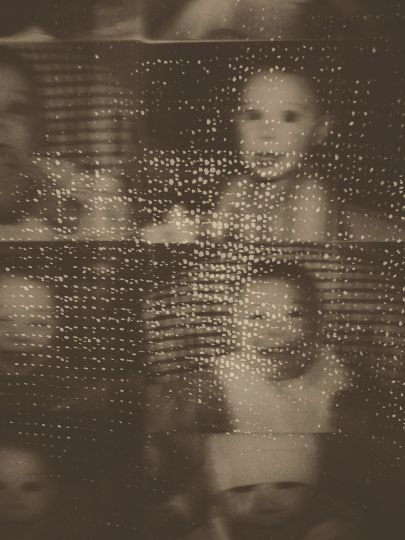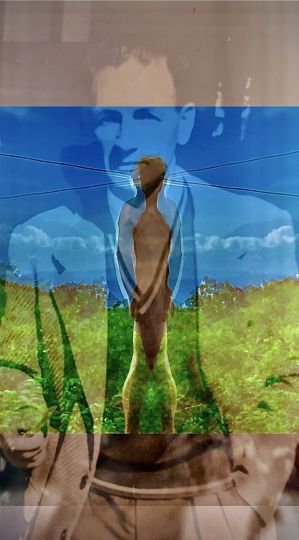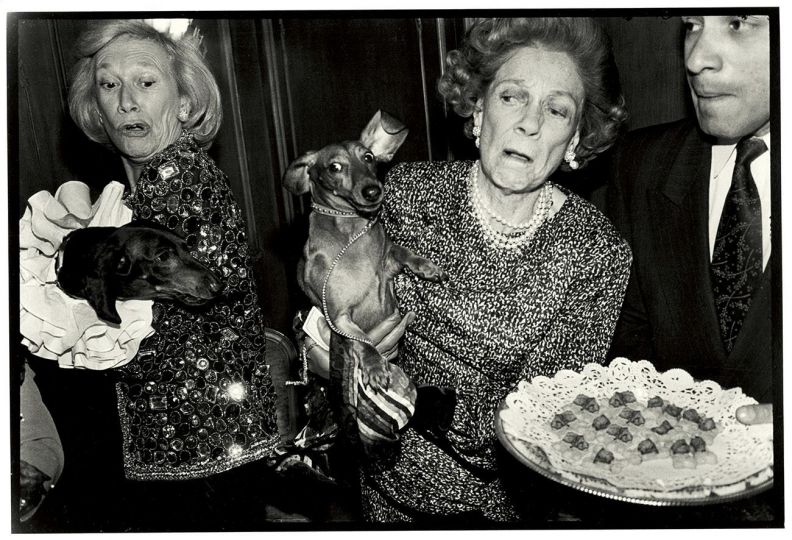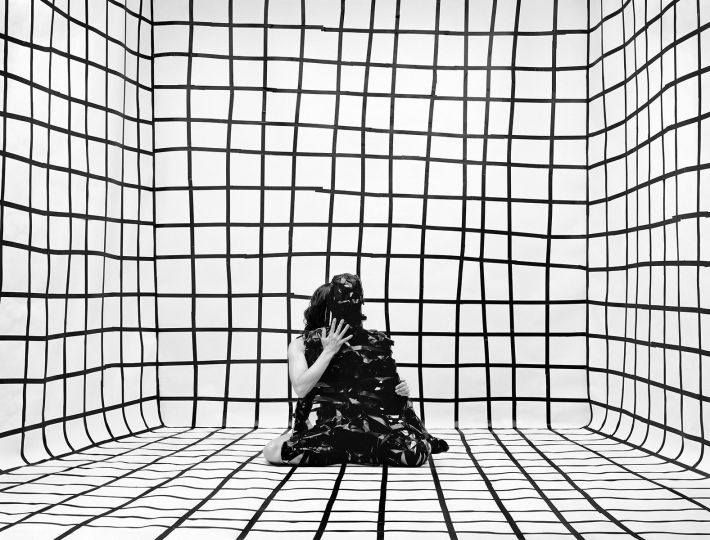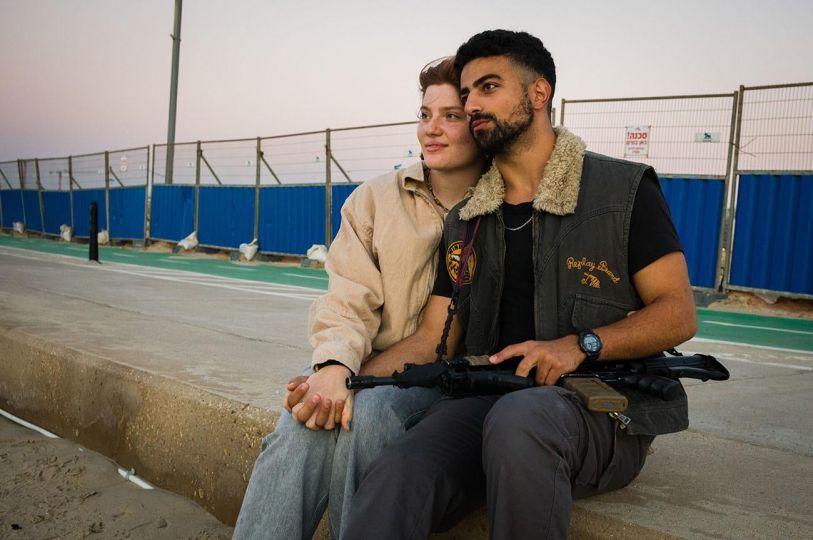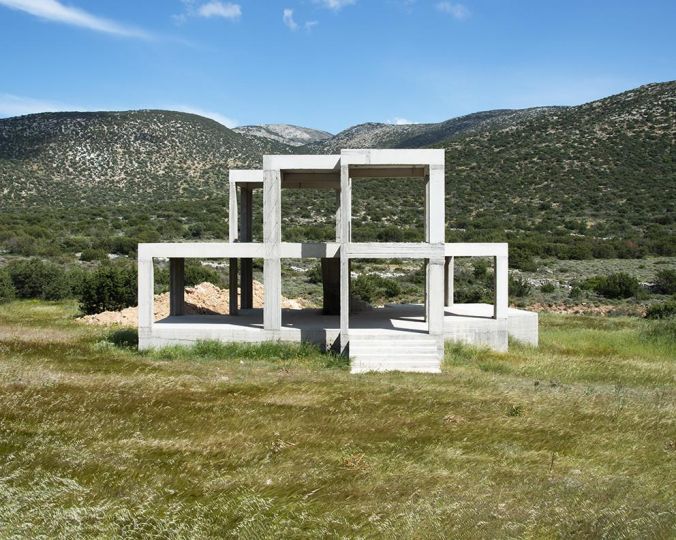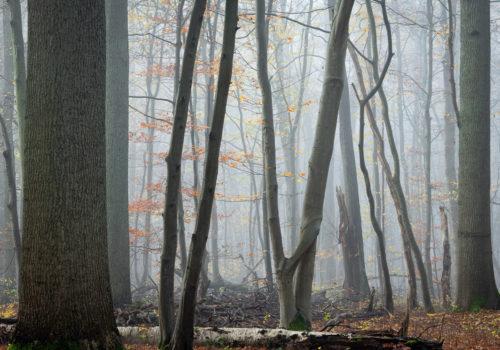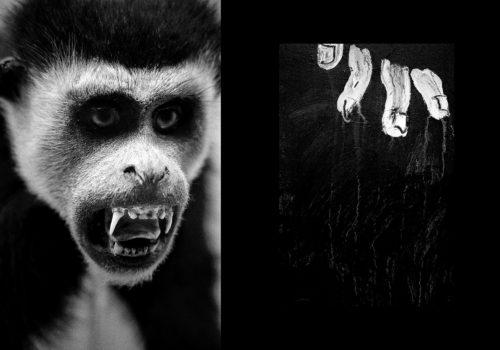Most observers will put the birth of the modern photography market around the end of the 1960s, when a few galleries opened on either side of the Atlantic. In 1971, Sotheby’s, London, started its program of regular photography auctions, soon to be followed by Christie’s. Since then, the photography market has grown to proportions that the pioneers could hardly have dreamt of, not least in the proliferation of photography fairs all over the world.
As time goes on, it should be remembered that The Photography Show, or the Annual Fine Art Photography Exposition as it was called until 1994, was the very first major photography fair and that every photography fair that has followed owes something to AIPAD’s efforts. The Photography Show itself has changed over the years. From its tabletop beginnings it has evolved into an elegant art fair, and the emphasis on classic photography it had for many years has given way to the inclusion of more contemporary work, making it a truly encyclopedic fair.
The inaugural edition of the fair was held in 1980 at the Roosevelt Hotel in New York. Fast work for an association that had been founded just a year before. Stephen White was AIPAD’s first President and explains why it was founded.
– It goes back to October 1978. George Eastman House organized a symposium and invited all the important collectors, of which there weren’t that many, people like Sam Wagstaff and Paul Walter. It was held at George Eastman House, and ran from Wednesday to Friday. On Saturday, there was to be an auction of some of George Eastman House’s material as it was always strapped for funds. Somebody got the bright idea of inviting a group of dealers, to have a small fair and charge the dealers a few hundred dollars each, to defray some of the cost of the symposium.
The symposium ran from ten to five, with an hour’s break for lunch, White explains.
– It was an intense program with talks all day. The fair ran at exactly the same time as the symposium. As a consequence, we had no visitors at all! We suspected it was planned that way, so that the collectors would spend their money at the auction, not with us. We were really upset at how we were being treated so we met up before lunch on Friday and it was decided that I should have a serious talk with the director of George Eastman House, Robert J. Doherty, and convince him to extend the lunch break. Doherty finally relented and extended the break to three hours. During those three hours, we all sold material and we all went home happy.
The dealers had learned a hard lesson. White continues.
– We realized that we needed to do something to avoid being taken advantage of and at the same time, to promote photography as a serious subject to collect. The solution was to organize ourselves and so in 1979, AIPAD, the Association of International Photography Art Dealers, came into being. Daniel Wolf acted as interim president. We incorporated AIPAD in the state of New York and at the next meeting, I was elected as AIPAD’s first president. In the first year, we had maybe 30 members, galleries, dealers, and organizations.
White was President for a year.
– I was based in Los Angeles and it was decided that it would be better if the President was based in New York. Still, I remained a very active member of the board and I worked on several things, including trying to get a fair going, which then happened in 1980. It was a very important step, the first serious photography fair.
Among the visitors to the first edition of the fair were Deborah Bell.
– I recall being in awe of all the great works spanning the entire history of photography — and of feeling a little intimidated by it all. It was the height of the “discovery period” of the history of photography, so the fair held a cornucopia of treasures from the 19th century to 1980. Many great photographers of the early to mid-20th century whose works were on view were still alive and there was a lot of excitement because of that.
Excitement was one thing. Sales quite another, and they were pretty lackluster at the first editions of the fair, White tells me.
– The recession in the early 1980s was absolutely terrible, and outside the small circle of dedicated collectors there was a great deal of confusion whether photography really was something serious to collect or not. Gradually the economy improved but the real gamechanger was the Getty deal in 1984. The news caused big headlines. It was an absolute sensation that the museum had made a huge purchase of photographs and created its Department of Photography. The Getty deal had a profound impact on the market. Confidence in the medium grew and with it, the credibility of AIPAD. Our fair was the only big photography fair because remember, Paris Photo didn’t start up until 1997. People would come from all over the country and Europe to see and buy, not just collectors but also curators and the fair was such an important place for people to meet and connect.
It was certainly important to Terry Etherton who had founded Etherton Gallery in Tucson in 1981.
– My gallery was off the beaten track as far as the art world was concerned. In the early years, I would get in my car and go on long road trips across the US in order to meet curators and collectors. I was urged to apply for AIPAD membership by Ursula Gropper and Tom Meyers at Grapestake Gallery and Jeffrey Fraenkel at Fraenkel Gallery and so I joined in 1985. It meant a great deal to me as a gallerist, to exhibit at the fair alongside established galleries like Howard Greenberg Gallery and Fraenkel Gallery. It was validation for what I had accomplished with my gallery and I was able to forge relationships with other dealers in the US and abroad. The fair was a critical reason for the growth of my gallery grew in the 80’s.
The first five editions of fair were held at the Roosevelt Hotel in New York, but starting in 1985, the fair changed cities on a yearly basis, including Berkeley, San Francisco, Washington DC, and Los Angeles. In 1986, it was held in Houston during the very first FotoFest Biennial, where Terry Etherton showed for the very first time.
– It was a tabletop fair, held at a hotel in Houston. The cost was not a big factor and we were able to drive from Tucson. I sold quite well but the thing I remember most clearly is that I sold a few photographs to Graham Nash, of Crosby, Stills, Nash & Young fame. My friendship with Graham continues to this day and many of the dealers I met in the early years at the AIPAD fairs became close friends.
Deborah Bell joined AIPAD in 1992.
– I started out as a private dealer in 1988 and remained so for 18 years before opening my first gallery in 2001. I didn’t show at the fair in 1992 though I had showed the year before when it was held at Butterfield & Butterfield in San Francisco. I was allowed to share a booth as a non-member with Sander Gallery. The fair was extremely important to my dealership, then my gallery, and has continued to be.
In 1993, the fair was back in New York, at the Sheraton Hotel, and the following years, at the New York Hilton Hotel. In the early days, most exhibitors were US-based. Over time, more and international exhibitors filled the ranks, among them, Michael Hoppen who had opened his London gallery in 1991.
– I’ll never forget the first time I visited the fair. It was held right in the heart of New York and attending the fair was like being mobbed! It was absolutely packed and incredibly busy! It was a tabletop fair and by today’s standards it wasn’t terribly grownup but then no art fairs were at that time, not even Art Basel. To me it was just all new, fresh, fun and very exciting. It was the place to be. There was really interesting material, all vintage and black and white, no color apart from dye transfers. I think we all genuinely felt that photography had finally arrived and was being accepted as an art form. We were no longer the street urchins. We were allowed to sit at the high table of the art world.
With time, the tables were replaced with booths and more and more contemporary photography, including large color work, began to appear at the fair. Hoppen continues.
– In the early 2000s, I showed Diasec works by Desirée Dolron, the very first Diasec works I had seen. I remember how we struggled to get them downstairs and load them into people’s taxis and cars. It’s not surprising that large color entered the fair. That’s what happens when new technology comes along, be it smaller cameras, faster film, large color prints, photographers just jump on it. In a few years, you will probably see Holography at the fair.
In 2006, the fair moved to the Park Avenue Armory. Following a stint at Pier 9 from 2017 to 2019, the pandemic set in. The fair was back in 2022 and 2023 at Center415. This year, it returns to the Park Avenue Armory, the most popular venue with exhibitors and visitors alike. The 2024 edition is special for Miyako Yoshinaga as her eponymous New York-based gallery marks its 25-year anniversary.
– I first visited the fair in the late 1990s and it was such a pleasure to enjoy so many fascinating photographs, both classic and contemporary. I joined AIPAD in 2019 but due to the pandemic, I didn’t exhibit at the fair until 2022 but it immediately became important to my gallery and it’s a great way to introduce the works of my artists to a wider audience.
Yoshinaga notes some of the changes she has seen at the fair over the years.
– The fair has always been very high quality and exhibiting dealers are extremely knowledgeable about the media. But perhaps as time went on, it became a bit too tight and exclusive, perhaps due to the deep but narrow interests among established collectors. In recent years, the fair has become much more open and accessible to the general public, it’s more educational and more enjoyable. I particular like meeting and connecting with museum curators and enthusiastic photography lovers, new as well as established collectors with discerning eyes.
Among the museum curators are last year’s winners of the AIPAD Award, Hans Rooseboom and Mattie Boom, Rijksmuseum, Amsterdam. They first visited the fair in 2007, Rooseboom tells me.
– Up to that point, we had had to limit ourselves 19th-century photography. After the museum decided to create galleries for 20th-century art, we started collecting from that period as well. In 2007, we got a lawyer’s firm, Baker McKenzie, to sponsor us so it made sense to visit New York annually to buy at The Photography Show or from dealers.
Boom was impressed with the fair from the start.
– It was held at the Armory, a beautiful setting, and there were many small, cozy booths with a wide range of all sorts of interesting objects. The fair was less posh than Paris Photo and full of surprises. We especially loved the mix of high and low.
And they have bought both high and low at the fair, Rooseboom explains.
– We started collecting relatively late, in 1994. As we didn’t have the deepest of pockets, we couldn’t just focus on expensive masterpieces. It has been a blessing in disguise, because if you don’t have unlimited financial resources, you have to look, think, and collect differently and acquire unknown great pictures that you would otherwise easily overlook. We bought at our first visit in 2007 and we have bought at every edition of the fair since. Sometimes maybe only one piece, sometimes a few. As we already have a collection of some 160,000 items, we are filling the gaps and entering new fields. There is a lot to be discovered, but we try to maintain some balance between patience and eagerness.
The two curators are currently in the final stages of preparing a large exhibition at Rijksmuseum, Boom tells me.
– The exhibition is about American photography and it opens in February 2025. It’s partly based on works from our own collection, partly on loans from other institutions, mainly in the US, as well as works from private collections. Thanks to the Baker McKenzie sponsorship, American photography has grown into a strong collecting focus for us for almost 14 years. We have a fine collection, but the aim and scope of the exhibition is more wide-reaching than what we have. Still, there is a sad side to curating the exhibition, as there is with every exhibition. You can’t show everything you have, and consequently we have had to kill off more than a few of our darlings.
The winner of this year’s AIPAD Award is Vince Aletti, collector, author, and curator. Elsewhere in this catalog, he discusses some of his recent acquisitions. He has been a visitor to The Photography Show since the Hilton Hotel days and has done several ‘In Conversation’ sessions at the fair, including one for his highly-recommended book, Issues : A History of Photography in Fashion Magazines (2019). I ask him what his thoughts were when he got the news.
– After previous awards to Sandy Phillips, Jeff Rosenheim, Anne Tucker, Sarah Greenough, and other major museum curators, my first thought was, “Are you serious? I’m not worthy!” But then I couldn’t believe that my book The Drawer won the 2023 Paris Photo-Aperture PhotoBook of the Year either. Unbelievable things are happening to me and I couldn’t be more grateful. But do I have to get a new suit?
The AIPAD Award means a lot Aletti tells me.
– After writing weekly reviews of photography exhibitions for The Village Voice and then The New Yorker for nearly twenty years, I’ve been feeling kind of sidelined of late. I’m still writing regularly but often not in print, which still seems outside the cultural conversation to me. And because photography criticism, along with so much regular art writing, has been cut back so drastically, it’s more and more important to me to continue to be present. This award acknowledges that presence and encourages me to double down on it.
Michael Diemar
This article originally appeared in the AIPAD Catalogue sponsored by MUUS Collection.
The Photography Show presented by AIPAD
April 25 – 28, 2024
Park Avenue Armory
643 Park Ave
New York, NY 10065
www.aipad.com



